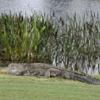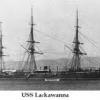-
Posts
3,084 -
Joined
-
Last visited
Reputation Activity
-
 Jaager got a reaction from woodartist in Does cherry carve well?
Jaager got a reaction from woodartist in Does cherry carve well?
Sweet Cherry Prunus avium is more dense than Black Cherry Prunus serotina.
Only birds eat the fruit of Black Cherry as far as I know. It is mostly the stone, so eating it would be more work than it is worth. It is used to make wild cherry syrup - an old vehicle for compounded Rx liquids - mainly pediatric. The syrup is made from the bark, not the fruit.
I do not consider Black Cherry wood to be significantly hard. It is easy to work and serious sanding can get you into trouble much more quickly than with Hard Maple.
Black Cherry is not very far up my list of wood species for fine detail carving.
-
 Jaager got a reaction from Scottish Guy in Roar Ege by Scottish Guy - Billing Boats - 1:25
Jaager got a reaction from Scottish Guy in Roar Ege by Scottish Guy - Billing Boats - 1:25
Well, the original Italian kit mfg who developed the POB method - named them "bulkheads". The very name of the method uses it POB Plank on bulkhead.
Bulkhead is a complete part of how it is described. But it is not an actual bulkhead Steel ships have bulkheads. Wooden Chinese seagoing junks had bulkheads. If Titanic had been built with actual bullheads - instead of the transverse barriers stopping short of being chambers that could be sealed, it may have floated long enough and level enough for a more organized abandonment or even help from something large. As for yachts, is it that they are molded more than a frame? Thinner than a frame? Are there yachts built like a submarine with dogged hatches in a barrier across the hull that allows it to be a series of isolated cells?
An actual bulkhead is an integral part of the internal structure of a vessel. In POB, it is just the shape inside the hull at the station where it is - thus a mold (mould). The midline support is not a keel. It is a central spine. These pretentious names "bulkhead" and "keel" help with advertising and salesman hooks. They are too inculcated to be changed for most kit builders. But, just like calling a yard - a "yardarm" - calling the part a bulkhead or keel outside its kit realm is a reflection of depth of knowledge.
-
 Jaager got a reaction from Keith Black in Roar Ege by Scottish Guy - Billing Boats - 1:25
Jaager got a reaction from Keith Black in Roar Ege by Scottish Guy - Billing Boats - 1:25
Well, the original Italian kit mfg who developed the POB method - named them "bulkheads". The very name of the method uses it POB Plank on bulkhead.
Bulkhead is a complete part of how it is described. But it is not an actual bulkhead Steel ships have bulkheads. Wooden Chinese seagoing junks had bulkheads. If Titanic had been built with actual bullheads - instead of the transverse barriers stopping short of being chambers that could be sealed, it may have floated long enough and level enough for a more organized abandonment or even help from something large. As for yachts, is it that they are molded more than a frame? Thinner than a frame? Are there yachts built like a submarine with dogged hatches in a barrier across the hull that allows it to be a series of isolated cells?
An actual bulkhead is an integral part of the internal structure of a vessel. In POB, it is just the shape inside the hull at the station where it is - thus a mold (mould). The midline support is not a keel. It is a central spine. These pretentious names "bulkhead" and "keel" help with advertising and salesman hooks. They are too inculcated to be changed for most kit builders. But, just like calling a yard - a "yardarm" - calling the part a bulkhead or keel outside its kit realm is a reflection of depth of knowledge.
-
 Jaager got a reaction from Keith Black in Roar Ege by Scottish Guy - Billing Boats - 1:25
Jaager got a reaction from Keith Black in Roar Ege by Scottish Guy - Billing Boats - 1:25
My apologies if I am missing the questions or covering something already addressed.
Naming these particular components "bulkheads" often leads to misunderstanding. They are molds. They stay in the model for most models of decked ships. They are not seen, so it does not matter. This model is a clinker built open boat. The molds are temporary forms - or at least they should be. I would build it the same way as I would any model of an open boat.
I did not see any plans' preview on the Billing site, so I have no knowledge of what is with this one.
A central spine - the top of which stops where the actual keel meets the garboard plank. A series of molds to give support and temporary shape to the planking. When it has done its job, it is discarded - I mean the spine and the attached molds.
The actual keel sits on the spine. The P&S garboards bond to it. The subsequent rows of planking added - row two P&S - row three P&S, etc. Doing just one side to completion and then the other is very bad practice. Continuously check for bilateral symmetry. Adjust as necessary.
I have seen Viking hulls with totally misunderstood planking runs. One such was a cover story on the last series of Ships in Scale. The problem was that the extreme upturn of the planking at the bow and stern are an illusion. No real planks can turn up like that. There was a gentile sheer. The up turn was a carving. It started at the rail and lower- an elaborate stem - not just a rabbet.
The spine and molds can be any material that will hold up. They are disposable. Actually for the scratch, they can be a carved sold Pine mold, carved horizontal layers, carved transverse layers - which ever fits your style.
The ribs for the model go in after the planked shell is completed. Unlike carvel, they cannot be bent or heat bent*. The "Z" of the planking requires pattern work to get a fit.
Anything ferrous on a model is a disaster. It rusts , stains, and dissolves away. On a static model, you will not live long enough to see it - unless someone invents a Niven Autodoc real soon.
Soft brass wire, or given its rapid rate of tarnish - soft copper wire - a possibly interesting color better than bright brass on a Dark Ages beasty. Having nothing instead of roves works too.
I would consider the tricky structures on the inside of the keel to be a keelson- attached along the keel - not of the keel.
*(Heat allows the lignin to be manipulated. Water does not dissolve it. If it did, trees would melt. Steam is just a messy way to apply heat at model scale. It swells the surface fibers. For full size timbers - it is necessary.)
-
 Jaager got a reaction from Scottish Guy in Roar Ege by Scottish Guy - Billing Boats - 1:25
Jaager got a reaction from Scottish Guy in Roar Ege by Scottish Guy - Billing Boats - 1:25
My apologies if I am missing the questions or covering something already addressed.
Naming these particular components "bulkheads" often leads to misunderstanding. They are molds. They stay in the model for most models of decked ships. They are not seen, so it does not matter. This model is a clinker built open boat. The molds are temporary forms - or at least they should be. I would build it the same way as I would any model of an open boat.
I did not see any plans' preview on the Billing site, so I have no knowledge of what is with this one.
A central spine - the top of which stops where the actual keel meets the garboard plank. A series of molds to give support and temporary shape to the planking. When it has done its job, it is discarded - I mean the spine and the attached molds.
The actual keel sits on the spine. The P&S garboards bond to it. The subsequent rows of planking added - row two P&S - row three P&S, etc. Doing just one side to completion and then the other is very bad practice. Continuously check for bilateral symmetry. Adjust as necessary.
I have seen Viking hulls with totally misunderstood planking runs. One such was a cover story on the last series of Ships in Scale. The problem was that the extreme upturn of the planking at the bow and stern are an illusion. No real planks can turn up like that. There was a gentile sheer. The up turn was a carving. It started at the rail and lower- an elaborate stem - not just a rabbet.
The spine and molds can be any material that will hold up. They are disposable. Actually for the scratch, they can be a carved sold Pine mold, carved horizontal layers, carved transverse layers - which ever fits your style.
The ribs for the model go in after the planked shell is completed. Unlike carvel, they cannot be bent or heat bent*. The "Z" of the planking requires pattern work to get a fit.
Anything ferrous on a model is a disaster. It rusts , stains, and dissolves away. On a static model, you will not live long enough to see it - unless someone invents a Niven Autodoc real soon.
Soft brass wire, or given its rapid rate of tarnish - soft copper wire - a possibly interesting color better than bright brass on a Dark Ages beasty. Having nothing instead of roves works too.
I would consider the tricky structures on the inside of the keel to be a keelson- attached along the keel - not of the keel.
*(Heat allows the lignin to be manipulated. Water does not dissolve it. If it did, trees would melt. Steam is just a messy way to apply heat at model scale. It swells the surface fibers. For full size timbers - it is necessary.)
-
 Jaager got a reaction from allanyed in Need help with HMS Beagle bowsprit
Jaager got a reaction from allanyed in Need help with HMS Beagle bowsprit
With a plan of the bowsprit, it is just a matter of figuring out how to match.
Wooden kit plans are obligated to show WHAT should be done. If they do not, that kit is flawed.
Explicit instructions for every step are the need for a beginner kit. The more sophisticated kits do not need them so much. The procedures and skills are variations of what has already been learned. At least this is my take on the situation.
The OcCre site lists HMS Beagle as being "medium difficulty". A significant degree of prior experience is expected. The instructions should not be expected to include what should a part of a builder's skill set going in. If jumping ahead rather than paying the dues has not worked out, storing the advanced kit and going to a beginner kit series should fix the situation.
For Beagle's bowsprit - Here is the interpretation of the structure done by Karl Heinz Marquardt :
-
 Jaager reacted to popeye2sea in replacing plastic mast and spars
Jaager reacted to popeye2sea in replacing plastic mast and spars
Description of how to make a 90 deg. channel; 45 deg. L and 45 deg. R cuts.
Henry
-
 Jaager got a reaction from Ryland Craze in Communicate with Moderator
Jaager got a reaction from Ryland Craze in Communicate with Moderator
I find that an easy way is to scroll down to "Who's on line" set the cursor on a red or pink? name. A window should open. Click on message, filling the blanks and type the message.
-
 Jaager got a reaction from Rik Thistle in OUTSTANDING Mini Drill
Jaager got a reaction from Rik Thistle in OUTSTANDING Mini Drill
I checked on Amazon. AM Arrowmax offers a small spectrum of variations, none of which intersect with my needs. Mostly it is mutually exclusive for the 50-80 wire gauge drill bit function. Speeds and tool attachment are discordant. The models with a chuck that allows infinite diameter bits do not have the speeds that I require. The ones with the speed have a fixed size insert. There is even one with 10,000 to 30,000 RPM if burning a hole instead of drilling one is an aim.
The drill bit sets with a fixed size base are usually carbide - not HSS. Most of what we do involves the possibility of "Parkinson-like" twitches. HSS has flex, carbide does not.
Reading the reviews - red flags - lots of red flags - the quality of the materials and the gauges of the wires - I fear planned obsolescence and short term obsolescence at that.
-
 Jaager got a reaction from thibaultron in OUTSTANDING Mini Drill
Jaager got a reaction from thibaultron in OUTSTANDING Mini Drill
I checked on Amazon. AM Arrowmax offers a small spectrum of variations, none of which intersect with my needs. Mostly it is mutually exclusive for the 50-80 wire gauge drill bit function. Speeds and tool attachment are discordant. The models with a chuck that allows infinite diameter bits do not have the speeds that I require. The ones with the speed have a fixed size insert. There is even one with 10,000 to 30,000 RPM if burning a hole instead of drilling one is an aim.
The drill bit sets with a fixed size base are usually carbide - not HSS. Most of what we do involves the possibility of "Parkinson-like" twitches. HSS has flex, carbide does not.
Reading the reviews - red flags - lots of red flags - the quality of the materials and the gauges of the wires - I fear planned obsolescence and short term obsolescence at that.
-
 Jaager got a reaction from bridgman in Communicate with Moderator
Jaager got a reaction from bridgman in Communicate with Moderator
I find that an easy way is to scroll down to "Who's on line" set the cursor on a red or pink? name. A window should open. Click on message, filling the blanks and type the message.
-
 Jaager got a reaction from Knocklouder in Communicate with Moderator
Jaager got a reaction from Knocklouder in Communicate with Moderator
I find that an easy way is to scroll down to "Who's on line" set the cursor on a red or pink? name. A window should open. Click on message, filling the blanks and type the message.
-
 Jaager got a reaction from Canute in Do I need thes books, or just want them?
Jaager got a reaction from Canute in Do I need thes books, or just want them?
Underhill's books appear to be still available from the original publisher's web site in the UK Brown, Son and Ferguson
His plans are also there - almost all are later 19th and early 20th century subjects
https://www.skipper.co.uk/catalogue/books/page
https://www.skipper.co.uk/catalogue/item/masting-and-rigging L 22
https://www.skipper.co.uk/catalogue/item/plank-on-frame-models-and-scale-masting-rigging-volume-1 L 25
https://www.skipper.co.uk/catalogue/item/plank-on-frame-models-and-scale-masting-rigging-volume-2 L 20
https://www.skipper.co.uk/catalogue/item/deep-water-sail L 30
https://www.skipper.co.uk/catalogue/item/sailing-ship-rigs-and-rigging L 16
Both ANCRE books are " available"
as written, the shipping is so high that I will no longer consider any purchase.
They need a US agent, and not one focused on avarice - cough NIP cough
https://ancre.fr/en/14-basic-books
AN INTRODUCTION TO PLANKED ON FRAME SCALE MODEL SHIP BUILDING
AN INTRODUCTION TO PLANKED ON FRAME SCALE MODEL SHIP BUILDING “DOCKYARD STYLE”
An introduction to Planked on frame model ship building through more than 200 pages illustrated by approximately 500 colour photographs and captions.
This guide includes explanations on all the techniques used during the construction of a model.
EAN : 9791096873920
Model MODELA
En stock
Print
Author : Adrian SOROLLA translation by GILLES KORENT
49 Euro
The Art of Shipmodeling - Bernard Frolich
The Art of Shipmodeling describes the author's experience and methods in 300 pages abundantly illustrated with numerous drawings, sketchs and more than 600 commentated photos.
Model LART
En stock
Print
Author : Bernard Frölich
89 Euro
-
 Jaager got a reaction from Scottish Guy in Type of glue to use planking a hull
Jaager got a reaction from Scottish Guy in Type of glue to use planking a hull
It is a terrible choice. It has a relatively short life. It becomes brittle and releases its bond.
It is thick and does not allow positioning. There is no easy way to reverse it.
Attach Lino to a plywood sheet for something intended to last 10 years or so - go for it.
PVA plus heat can become a contract cement of sorts. A dry even coat on both meeting surfaces plus heat activates a bond. The outside layer has to be thin enough to allow heat transfer at a temp that does not char or cook the outer layer.
-
 Jaager got a reaction from Scottish Guy in Did 18th and 19th century ships have flat weatherdecks?
Jaager got a reaction from Scottish Guy in Did 18th and 19th century ships have flat weatherdecks?
I did not see a log with the deck being laid in process. It looks like there is a one piece sub deck on top of the molds and individual planks are laid on top.
A deck curve should be easy to add. Use actual deck beams. Now the thickness would be much less than an actual deck beam. The middle would be the thickness of the deck crown, At the tops of the frames. At the side, the thickness would feather to zero. The wider this pseudo beam the happier you will be.
This crowned deck would be done using- a shim that is an arc, actually, The old How To Build A Ship Model books show to get an arc or an ellipse over a distance.
For the deck - to avoid creating a cartoon by over doing it:
A touch of walnut aqueous stain or walnut acrylic paint added to the PVA on the plank edges should give you a scale appropriate caulking seam.
No trunnels.
Study up in planking butt shifts.
A 4 butt shift with just a hint of a seam - not a wide -poke you in the eye bowling alley gutter seam.
The grain makes doing a scratch for a cross plank seam difficult to pull off. I wonder if one of those ultra thin saws made from a razor blade would leave an even channel - not deep and filled with walnut PVA would do it?
-
 Jaager got a reaction from mtaylor in Do I need thes books, or just want them?
Jaager got a reaction from mtaylor in Do I need thes books, or just want them?
Underhill's books appear to be still available from the original publisher's web site in the UK Brown, Son and Ferguson
His plans are also there - almost all are later 19th and early 20th century subjects
https://www.skipper.co.uk/catalogue/books/page
https://www.skipper.co.uk/catalogue/item/masting-and-rigging L 22
https://www.skipper.co.uk/catalogue/item/plank-on-frame-models-and-scale-masting-rigging-volume-1 L 25
https://www.skipper.co.uk/catalogue/item/plank-on-frame-models-and-scale-masting-rigging-volume-2 L 20
https://www.skipper.co.uk/catalogue/item/deep-water-sail L 30
https://www.skipper.co.uk/catalogue/item/sailing-ship-rigs-and-rigging L 16
Both ANCRE books are " available"
as written, the shipping is so high that I will no longer consider any purchase.
They need a US agent, and not one focused on avarice - cough NIP cough
https://ancre.fr/en/14-basic-books
AN INTRODUCTION TO PLANKED ON FRAME SCALE MODEL SHIP BUILDING
AN INTRODUCTION TO PLANKED ON FRAME SCALE MODEL SHIP BUILDING “DOCKYARD STYLE”
An introduction to Planked on frame model ship building through more than 200 pages illustrated by approximately 500 colour photographs and captions.
This guide includes explanations on all the techniques used during the construction of a model.
EAN : 9791096873920
Model MODELA
En stock
Print
Author : Adrian SOROLLA translation by GILLES KORENT
49 Euro
The Art of Shipmodeling - Bernard Frolich
The Art of Shipmodeling describes the author's experience and methods in 300 pages abundantly illustrated with numerous drawings, sketchs and more than 600 commentated photos.
Model LART
En stock
Print
Author : Bernard Frölich
89 Euro
-
 Jaager got a reaction from Frank Burroughs in Do I need thes books, or just want them?
Jaager got a reaction from Frank Burroughs in Do I need thes books, or just want them?
Underhill's books appear to be still available from the original publisher's web site in the UK Brown, Son and Ferguson
His plans are also there - almost all are later 19th and early 20th century subjects
https://www.skipper.co.uk/catalogue/books/page
https://www.skipper.co.uk/catalogue/item/masting-and-rigging L 22
https://www.skipper.co.uk/catalogue/item/plank-on-frame-models-and-scale-masting-rigging-volume-1 L 25
https://www.skipper.co.uk/catalogue/item/plank-on-frame-models-and-scale-masting-rigging-volume-2 L 20
https://www.skipper.co.uk/catalogue/item/deep-water-sail L 30
https://www.skipper.co.uk/catalogue/item/sailing-ship-rigs-and-rigging L 16
Both ANCRE books are " available"
as written, the shipping is so high that I will no longer consider any purchase.
They need a US agent, and not one focused on avarice - cough NIP cough
https://ancre.fr/en/14-basic-books
AN INTRODUCTION TO PLANKED ON FRAME SCALE MODEL SHIP BUILDING
AN INTRODUCTION TO PLANKED ON FRAME SCALE MODEL SHIP BUILDING “DOCKYARD STYLE”
An introduction to Planked on frame model ship building through more than 200 pages illustrated by approximately 500 colour photographs and captions.
This guide includes explanations on all the techniques used during the construction of a model.
EAN : 9791096873920
Model MODELA
En stock
Print
Author : Adrian SOROLLA translation by GILLES KORENT
49 Euro
The Art of Shipmodeling - Bernard Frolich
The Art of Shipmodeling describes the author's experience and methods in 300 pages abundantly illustrated with numerous drawings, sketchs and more than 600 commentated photos.
Model LART
En stock
Print
Author : Bernard Frölich
89 Euro
-
 Jaager got a reaction from mtaylor in Drill bit suggestions
Jaager got a reaction from mtaylor in Drill bit suggestions
I like CML https://www.cmlsupply.com/bright-finish/
I aim for USA made if it is a choice for bits no economy to be had here.
What are you using to drive the bits?
-
 Jaager got a reaction from mtaylor in Do I need thes books, or just want them?
Jaager got a reaction from mtaylor in Do I need thes books, or just want them?
I don't think that you really want any of the three of them.
It is difficult for any single book to cover more than a specific era for model construction methods. Anything broad tends to be superficial.
The two volumes of the Ship Modeler's Shop notes are gems taken from the NRJ.
The basic skills are covered in logs or technical forums here - sometimes a chore to find - but also to see variations on the theme. There ain't no single "answer to it".
To stay out of a fugue state - it helps to specialize. Once you specialize, your books should be reprints of contemporary books or books that show the actual practice.
Find out what was actually done and try as best you can to duplicate it at model scale.
Gaasbeek comes from a very special time. WWI era. There is also Estep and Desmond and then Charles Davis' misleading application of what was done for WWI as being relevant to any time before then. For 20th century large wooden vessels - they are OK sources. Except for a failed and panic based effort to overcome the U boat sinking of bulk carriers by using wooden hulls, most large wooden vessels from then on were fantasy based replicas famous historical vessels. These methods are much more reflective of iron and steel engineered hulls than the construction methods from the Age of Sail.
-
 Jaager got a reaction from mtaylor in replacing plastic mast and spars
Jaager got a reaction from mtaylor in replacing plastic mast and spars
Just starting out, you cannot know which shapes will be useful and which are of little or no use. And that determination is individual - different for each of us.
It looks to me that you have done what is economical and practical. Time, and use will show you which shapes are your favorite. If or when these wear out or dull,
you can visit jewelers supply houses and buy quality individual files.
When you get to wood for the whole project, masting will be a minor portion of the whole. Different needs and challenges at every stage. When comes the time,
try to avoid seducing yourself into something too ambitious.
For a PhD, the old stats were 50% of those who start get to the dissertation only level and only 15% complete to the degree. It is not that the course work is all that difficult, it is not. The faculty is on your side. They help and encourage. It is that the process is an endurance test. I am not unsure that wooden ship model building - especially scratch is not an even more challenging endurance test.
-
 Jaager got a reaction from mtaylor in replacing plastic mast and spars
Jaager got a reaction from mtaylor in replacing plastic mast and spars
HHS - High Speed Steel oops - HSS
I think that the major categories are steel and carbide. Not for files but for cutters. For drill bits - with what we do and the small diameters we use - there is wiggle and flex - carbide is not flexible it may stay sharp a lot longer than steel but any lateral stress breaks it.
For files it is diamond vs steel the steel files do have some bend to them, but they object to being bent over the work like a Japanese garden bridge. Down force at both ends and work resistance in the middle and heat from friction and a good quality file becomes two pieces. It cost me either a Vallorbe Glardon or Contenti or Grobet or Vigor file to learn that lesson.
Diamond must be easier and less expensive to produce than working grooves into hard steel. The needle file On Sale deals are mostly diamond coated. I bet that the metal that supports the diamonds ain't the best.
-
 Jaager got a reaction from Canute in Do I need thes books, or just want them?
Jaager got a reaction from Canute in Do I need thes books, or just want them?
I don't think that you really want any of the three of them.
It is difficult for any single book to cover more than a specific era for model construction methods. Anything broad tends to be superficial.
The two volumes of the Ship Modeler's Shop notes are gems taken from the NRJ.
The basic skills are covered in logs or technical forums here - sometimes a chore to find - but also to see variations on the theme. There ain't no single "answer to it".
To stay out of a fugue state - it helps to specialize. Once you specialize, your books should be reprints of contemporary books or books that show the actual practice.
Find out what was actually done and try as best you can to duplicate it at model scale.
Gaasbeek comes from a very special time. WWI era. There is also Estep and Desmond and then Charles Davis' misleading application of what was done for WWI as being relevant to any time before then. For 20th century large wooden vessels - they are OK sources. Except for a failed and panic based effort to overcome the U boat sinking of bulk carriers by using wooden hulls, most large wooden vessels from then on were fantasy based replicas famous historical vessels. These methods are much more reflective of iron and steel engineered hulls than the construction methods from the Age of Sail.
-
 Jaager got a reaction from VTHokiEE in Do I need thes books, or just want them?
Jaager got a reaction from VTHokiEE in Do I need thes books, or just want them?
I don't think that you really want any of the three of them.
It is difficult for any single book to cover more than a specific era for model construction methods. Anything broad tends to be superficial.
The two volumes of the Ship Modeler's Shop notes are gems taken from the NRJ.
The basic skills are covered in logs or technical forums here - sometimes a chore to find - but also to see variations on the theme. There ain't no single "answer to it".
To stay out of a fugue state - it helps to specialize. Once you specialize, your books should be reprints of contemporary books or books that show the actual practice.
Find out what was actually done and try as best you can to duplicate it at model scale.
Gaasbeek comes from a very special time. WWI era. There is also Estep and Desmond and then Charles Davis' misleading application of what was done for WWI as being relevant to any time before then. For 20th century large wooden vessels - they are OK sources. Except for a failed and panic based effort to overcome the U boat sinking of bulk carriers by using wooden hulls, most large wooden vessels from then on were fantasy based replicas famous historical vessels. These methods are much more reflective of iron and steel engineered hulls than the construction methods from the Age of Sail.
-
 Jaager got a reaction from Canute in replacing plastic mast and spars
Jaager got a reaction from Canute in replacing plastic mast and spars
Just starting out, you cannot know which shapes will be useful and which are of little or no use. And that determination is individual - different for each of us.
It looks to me that you have done what is economical and practical. Time, and use will show you which shapes are your favorite. If or when these wear out or dull,
you can visit jewelers supply houses and buy quality individual files.
When you get to wood for the whole project, masting will be a minor portion of the whole. Different needs and challenges at every stage. When comes the time,
try to avoid seducing yourself into something too ambitious.
For a PhD, the old stats were 50% of those who start get to the dissertation only level and only 15% complete to the degree. It is not that the course work is all that difficult, it is not. The faculty is on your side. They help and encourage. It is that the process is an endurance test. I am not unsure that wooden ship model building - especially scratch is not an even more challenging endurance test.
-
 Jaager got a reaction from Canute in replacing plastic mast and spars
Jaager got a reaction from Canute in replacing plastic mast and spars
HHS - High Speed Steel oops - HSS
I think that the major categories are steel and carbide. Not for files but for cutters. For drill bits - with what we do and the small diameters we use - there is wiggle and flex - carbide is not flexible it may stay sharp a lot longer than steel but any lateral stress breaks it.
For files it is diamond vs steel the steel files do have some bend to them, but they object to being bent over the work like a Japanese garden bridge. Down force at both ends and work resistance in the middle and heat from friction and a good quality file becomes two pieces. It cost me either a Vallorbe Glardon or Contenti or Grobet or Vigor file to learn that lesson.
Diamond must be easier and less expensive to produce than working grooves into hard steel. The needle file On Sale deals are mostly diamond coated. I bet that the metal that supports the diamonds ain't the best.











